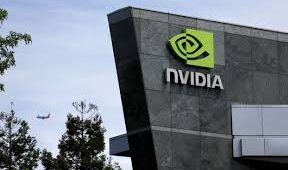



Noteworthy EVs Cars of 2025; The electric vehicle (EV) landscape in 2025 is marked by significant advancements in technology, design, and market adoption.
Here’s a comprehensive overview of the most notable EVs launched or announced this year
READ THIS POST: Elon Musk’s Challenge to OpenAI: A New Era in Tech
Table of Contents
Toggle1. Chevrolet Equinox EV
-
Powertrain Options: 220 hp (FWD) or 300 hp (AWD)
-
Range: 307–326 miles
-
Highlights: Offers a balance between affordability and performance, with a spacious interior and advanced tech features. Wikipedia
2. Kia EV4
-
Body Styles: 4-door sedan and 5-door hatchback
-
Platform: E-GMP (400V architecture)
-
Motor: Permanent magnet synchronous motor
-
Highlights: Stylish design with a focus on efficiency and performance. Wikipedia
3. BYD Sealion 05 EV
-
Class: Compact crossover SUV
-
Battery Options: 50.05 kWh or 60.93 kWh BYD Blade LFP
-
Electric Range: 430–520 km (CLTC)
-
Highlights: Rear-motor, rear-wheel-drive layout with a focus on urban mobility. Wikipedia
4. Nio Firefly
-
Class: Subcompact hatchback
-
Motor: 105 kW rear-wheel-drive
-
Battery: 42.1 kWh LFP
-
Electric Range: 330 km (WLTP), 420 km (CLTC)
-
Highlights: Compact design tailored for city driving, with plans for global expansion.
5. Deepal L06
-
Class: Mid-size sedan
-
Powertrain Options: EV and EREV (Extended Range Electric Vehicle)
-
Battery: 56.12 kWh (EV), 28.39 kWh (EREV)
-
Highlights: Combines traditional sedan design with modern electric technology. Wikipedia
6. Ferrari Elettrica (2026)
-
Powertrain: Quad-motor setup with over 1000 bhp
-
Battery: 122 kWh
-
Electric Range: 329 miles
-
Highlights: Active suspension system and high-performance capabilities.
🌍 Global EV Trends in 2025
-
Market Growth: In the European Union, EVs and plug-in hybrids combined captured nearly 25% of the market share by July 2025, with battery-electric vehicles alone accounting for 15.6%. Reddit
-
U.S. Market: The Tesla Model Y led EV sales with an estimated 146,000 units sold in the first half of 2025, followed by the Model 3 with 80,000 units.
-
Southeast Asia: Malaysia experienced a 110% year-on-year growth in EV registrations in February 2025, indicating a strong shift towards electric mobility in the region. Reddit
⚡ Emerging Technologies and Concepts
-
Mercedes-Benz Vision Iconic: A concept car blending vintage design with futuristic technology, featuring steer-by-wire, neuromorphic computing, and solar paint for extended range. Autoweek
-
Mitsubishi’s Future Plans: Mitsubishi announced an off-road-focused Outlander SUV for 2026 and plans to launch an electric vehicle based on the 2026 Nissan Leaf next summer. Car and Driver
READ THIS ALSO: 10 Reasons Why Samsung Software Update Is Necessary
Noteworthy EVs Cars of 2025; The EV market in 2025 showcases a diverse range of vehicles catering to various preferences, from compact city cars to high-performance luxury models. This year marks a significant step towards mainstream adoption of electric mobility, with advancements in technology and design leading the way.
